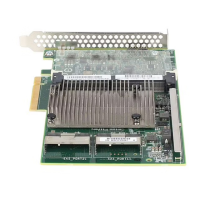Drive procedures 21
• When failed drives are located inside the server or storage system and the drive LEDs are not
visible, the Health LED on the front of the server or server blade illuminates. This LED also
illuminates when other problems occur such as when a fan fails, a redundant power supply fails, or
the system overheats.
• A POST message lists failed drives when the system is restarted, as long as the controller detects at
least one functional drive.
• HPE SSA lists all failed drives, and represents failed drives with a distinctive icon.
• Systems Insight Manager can detect failed drives remotely across a network. For more information
about Systems Insight Manager, see the documentation on the Insight Management DVD or on the
Hewlett Packard Enterprise website (http://www.hpe.com/info/insightmgmt).
• The System Management Homepage (SMH) indicates that a drive has failed.
• On servers with Windows operating systems, the Event Notification Service posts an event to the
server IML and the Microsoft Windows system event log.
• On servers with Linux operating systems, Linux agents log the event, create an IML entry, and
update /var/log/messages.
For more information about diagnosing drive problems, see ProLiant Gen8 Troubleshooting Guide,
Volume I: Troubleshooting.
CAUTION: Sometimes, a drive that has previously been failed by the controller may seem to
be operational after the system is power-cycled or (for a hot-pluggable drive) after the drive has
been removed and reinserted. However, continued use of such marginal drives may eventually
result in data loss. Replace the marginal drive as soon as possible.
Effects of a hard drive failure on logical drives
When a drive fails, all logical drives that are in the same array are affected. Each logical drive in an array
might be using a different fault-tolerance method, so each logical drive can be affected differently.
• RAID 0 configurations do not tolerate drive failure. If any physical drive in the array fails, all RAID 0
logical drives in the same array also fail.
• RAID 10 configurations tolerate multiple drive failures if no failed drives are mirrored to one another.
• RAID 5 configurations tolerate one drive failure.
• RAID 50 configurations tolerate one failed drive in each parity group.
• RAID 6 configurations tolerate two failed drives at a given time.
• RAID 60 configurations tolerate two failed drives in each parity group.
• RAID 1 (ADM) and RAID 10 (ADM) configurations tolerate multiple drive failures if no more than two
drives, mirrored to one another, fail.
Compromised fault tolerance
CAUTION: When fault tolerance is compromised, data loss can occur. However, it may be
possible to recover the data. For more information, see "Recovering from compromised fault
tolerance (on page 22)."
If more drives fail than the fault-tolerance method can manage, fault tolerance is compromised, and the
logical drive fails. If this failure occurs, the operating system rejects all requests and indicates
unrecoverable errors.
For example, fault tolerance might occur when a drive in an array fails while another drive in the array is
being rebuilt.

